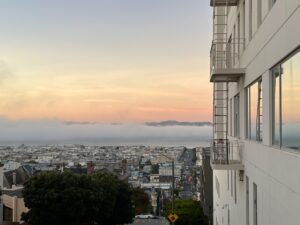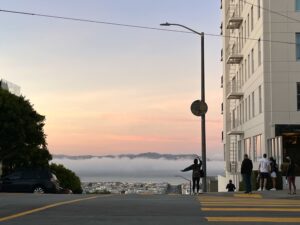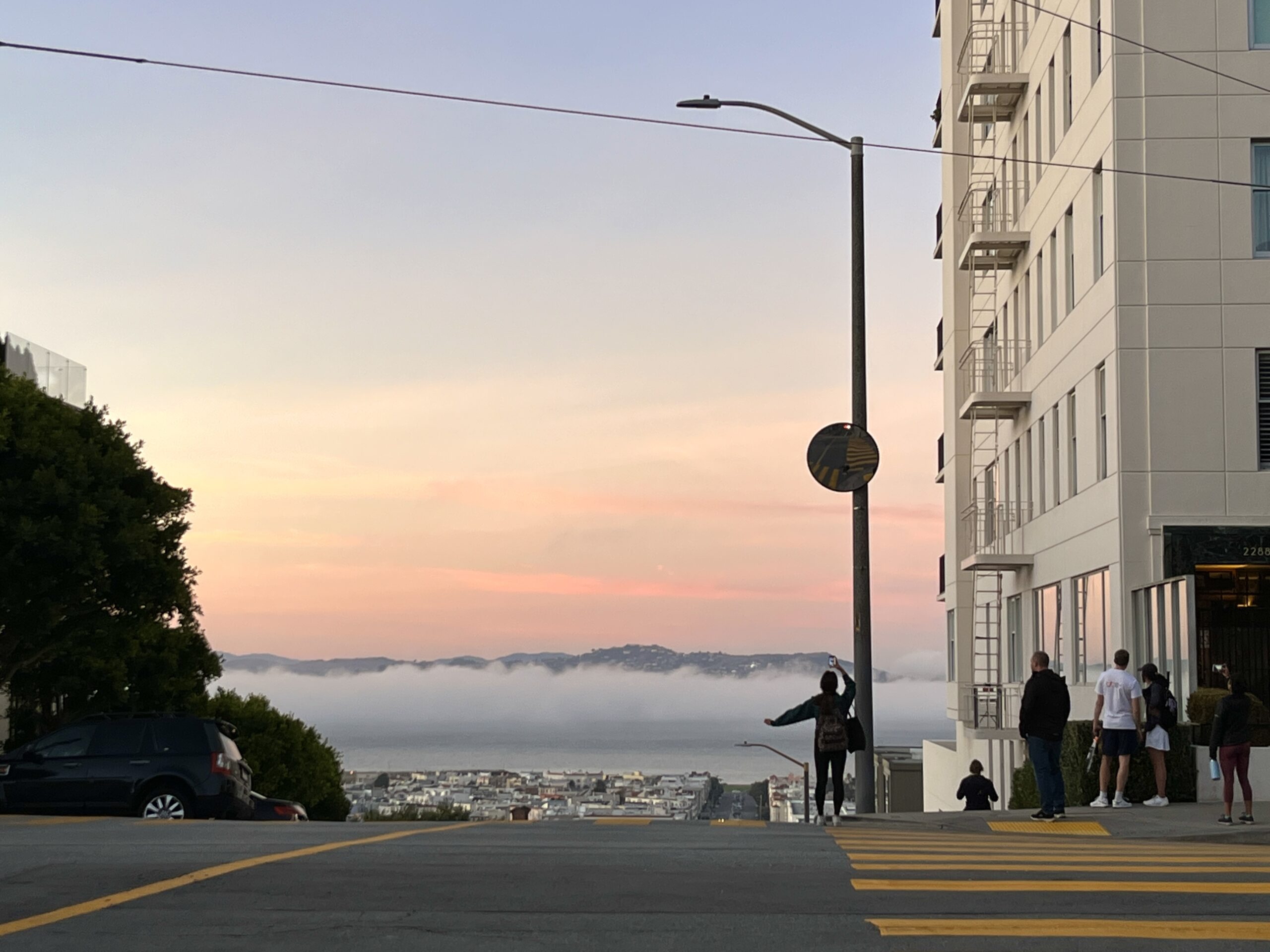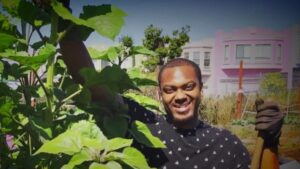Using observational data at airports near the California coast, the frequency of fog, measured by fog hours per day, has dropped 33% between the 1950s and 2010, as discussed in an article by The New York Times titled, “The Elusive Future of San Francisco’s Fog.” Lick-Wilmerding High School community members come from across the Bay and experience the fog in different ways. All in all, it’s agreed that San Francisco wouldn’t be San Francisco without the fog.
Fog is a natural phenomena behind unpredictable San Francisco weather — it’s part of why one district may be infamously chilly, while another is surprisingly sunny. It’s why realtors talk about neighborhood fog patterns almost as often as school districts or square-footage, and why fewer than half of Bay Area residents have air-conditioning systems.
Fog is, quite simply, a cloud low enough to touch the ground. As described by National Geographic in 2020, “fog occurs when water vapor condenses around air particles and dust, and combines to make tiny droplets that hang in the air.”
This previous summer, as most of the country feels the full force of summer heat, the average daily high in San Francisco is below 70 degrees Fahrenheit — the coolest of any major city in the United States. Although fog is often presented as an image rolling through the Bay or seeping into the city over the Golden Gate Bridge, it’s most impactful in nourishing the Bay Area’s Mediterranean climate.
A prime example of fog’s environmental impact is its influence on the coastal redwoods near the University of California, Santa Cruz. Integrative biology professor Dr. Todd Dawson studied at UC Santa Cruz as an undergraduate student, and later pursued his research surrounding the fog patterns as a professor at UC Berkeley. In his findings, Dawson concluded that 30-40% of the annual moisture used by the region’s redwoods derived from local fog.

photo by Odin Marin
Dawson’s research also described how the high canopies of the redwood forests create enormous filters of fog that drift among the area. As a result, the redwoods become drenched with fog, nourished as the water drips to the forest floor. As the water touches the rich soil, it sustains the surrounding plants and foliage, keeping stream beds from drying, as well as aiding specific local species such as lichens, newts and salmon.
As stated in the New York Times, “Fog is disappearing.” The ramifications of fog depletion extend far beyond a single species of tree. It raises questions such as, what are redwood’s survival rates long-term without the resource of fog? What about other agricultural economies in California that are cooled by fog, like Napa Valley to the north? Furthermore, what is the impact of fog depletion to water use, power grids, solar farms and wind turbines? And would San Francisco be, San Francisco, without fog? “Less fog is a game changer for a lot of things,” Dawson said.
Fog depletion is closely associated with climate changes around the world. “Especially here in coastal California, where we’re getting warmer land surfaces and sea temperatures, together leading to conditions not very favorable for fog formation here along the coast,” said ABC news.
LWHS Head Librarian Danielle Farinacci said she has a “love-hate relationship with fog. It is something unique to our city.” She added, “I’ve lived in a lot of places within California, and I feel like I almost don’t live in California anymore. Everywhere else I’ve lived had hot summers and cold winters. However, here is very different; it can be the dead of summer and you may not know what month it is, but you always know you are in San Francisco by the fog.”
The morning fog impacts Farinacci daily, as she bikes from her home near the Panhandle to work each morning. “I can generally see if it is foggy out, but we have such microclimates that I’ll start biking to work and it will be fine, but the fog creates a wetness on the roads that we can’t track. Sometimes I’ll leave my house and it’ll be sunny until I come over a hill and it’ll practically be raining,” she said.
Sunset District resident Jack Mireles ’25 said, “I love the fog. I think it is really underrated to be honest. I think the fog is more of a mood impactor than anything else. I usually enjoy fog, and it is almost like a frame of mind signifier for me for the day.”
Similarly, Farinacci said she associates the city with that “postcard image” of fog rolling through the Golden Gate Bridge. “That first time you see it, it sticks with you. There’s never going to be a more beautiful shot than that,” she said.
Mireles has grown up in San Francisco his whole life, and said, “as an SF resident, I definitely associate with the fog and take pride in it.”
Farinacci also discussed her opinions on the “Karl The Fog” Twitter account. “The name has quickly become something that we regularly refer to now,” she said. The account was anonymously started in 2010 with inspiration taken from the friendly giant monster in the 2003 film Big Fish. Since it began, the @KarlTheFog Twitter handle has amassed 350,000 followers.
Farinacci finds the account funny, but said, “if you think of it historically speaking, the account creator kind of decided what we refer to the fog as, for good or bad. They took a piece of popular culture and put a name on it that will forever be its name.”
Mireles said he’s grown up knowing “Karl” and following the Instagram account. He enjoys many of the account’s posts about Bay Area fog, and feels connected to the name and account as a San Francisco resident who has grown up surrounded by the city’s foggy climate. “I feel like the Mediterranean climate in San Francisco is very unlike most places,” he said. “San Franciscans have a grasp on the foggy climate better than anyone else. It’s unknown to many outsiders.”![]()

photo by Odin Marin
Oakland resident Bryce Hunt ’25 finds the fog at LWHS and within the city to be unpredictable and unreliable. “I check the weather in the morning, but I always just assume it’ll be cold, so I make sure to wear layers.”
As a student who commutes to LWHS from the East Bay, Hunt finds the fog pretty when it’s setting over the Presidio or the Golden Gate Bridge, but would much rather have endless sunny days. “It’ll be freezing and foggy and cloudy at school, but as soon as I get out of the tunnel on BART, it’s super warm and sunny. It’s like I’m living in two different worlds,” Hunt said.
As fog continues to deplete and become even more unpredictable, San Francisco and surrounding Bay Area residents can’t help but think of how our climate might change, along with the San Francisco culture surrounding the infamous tourist attraction that is Karl The Fog.






